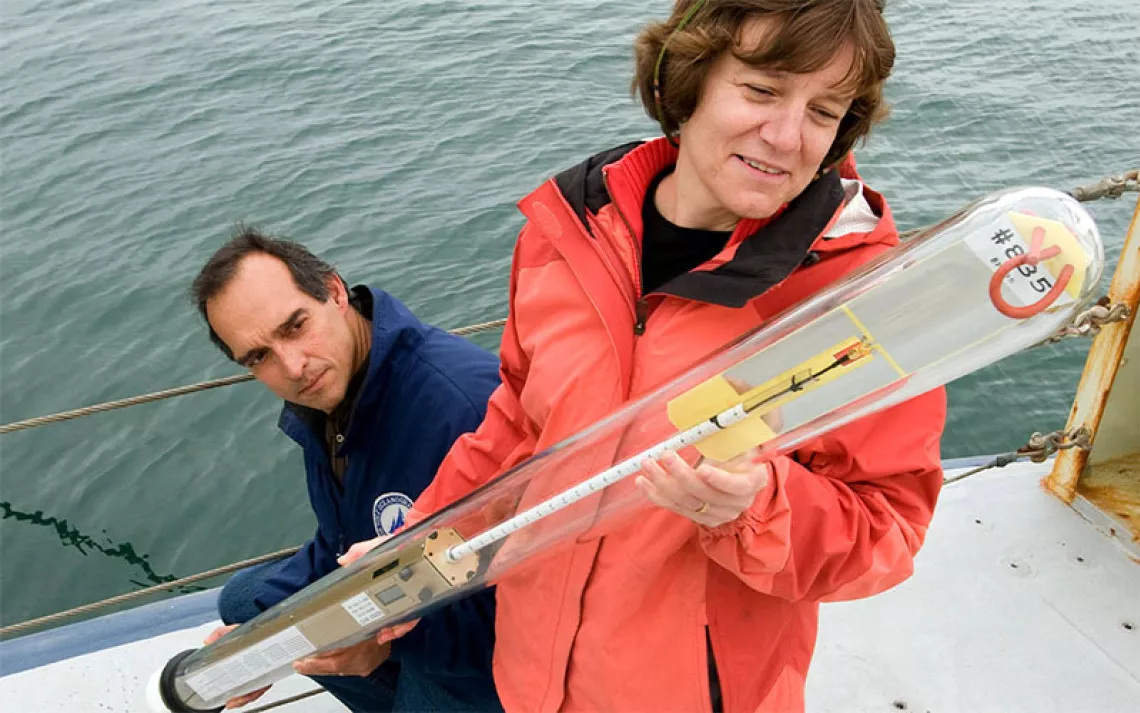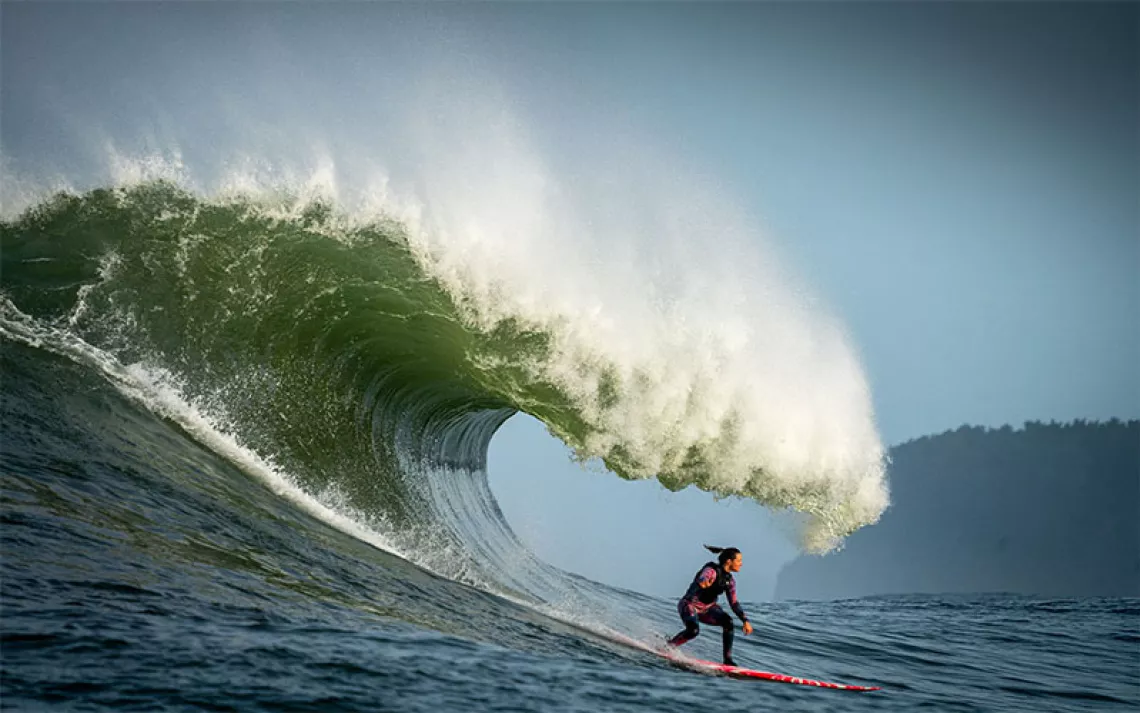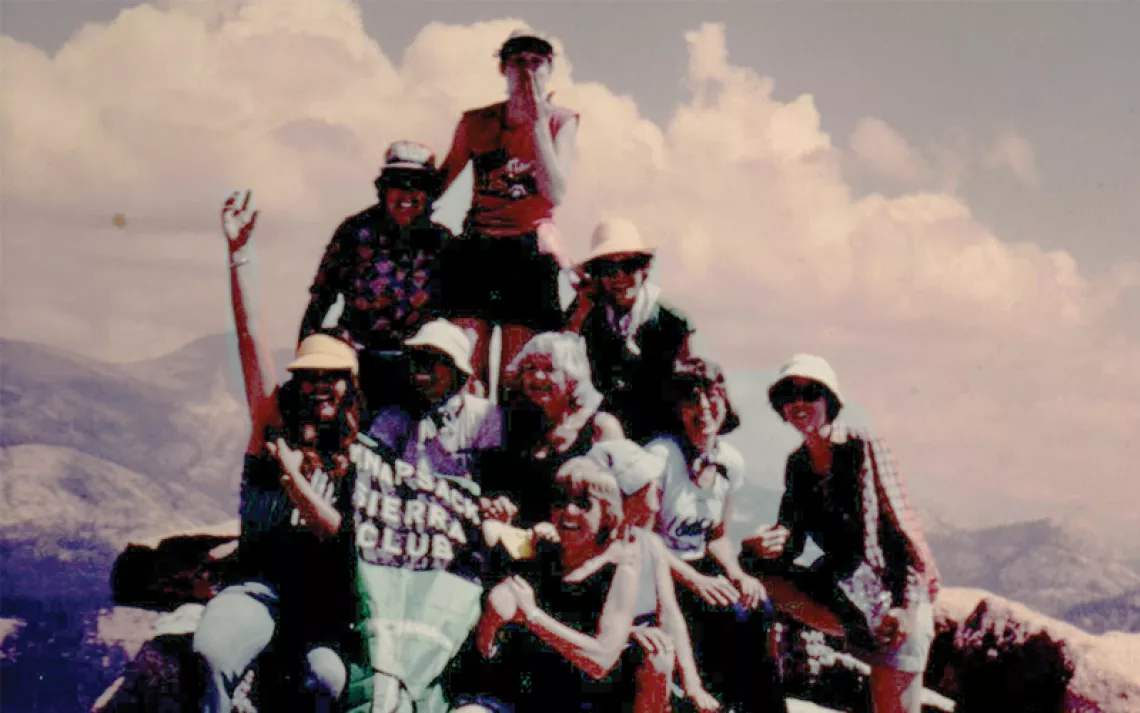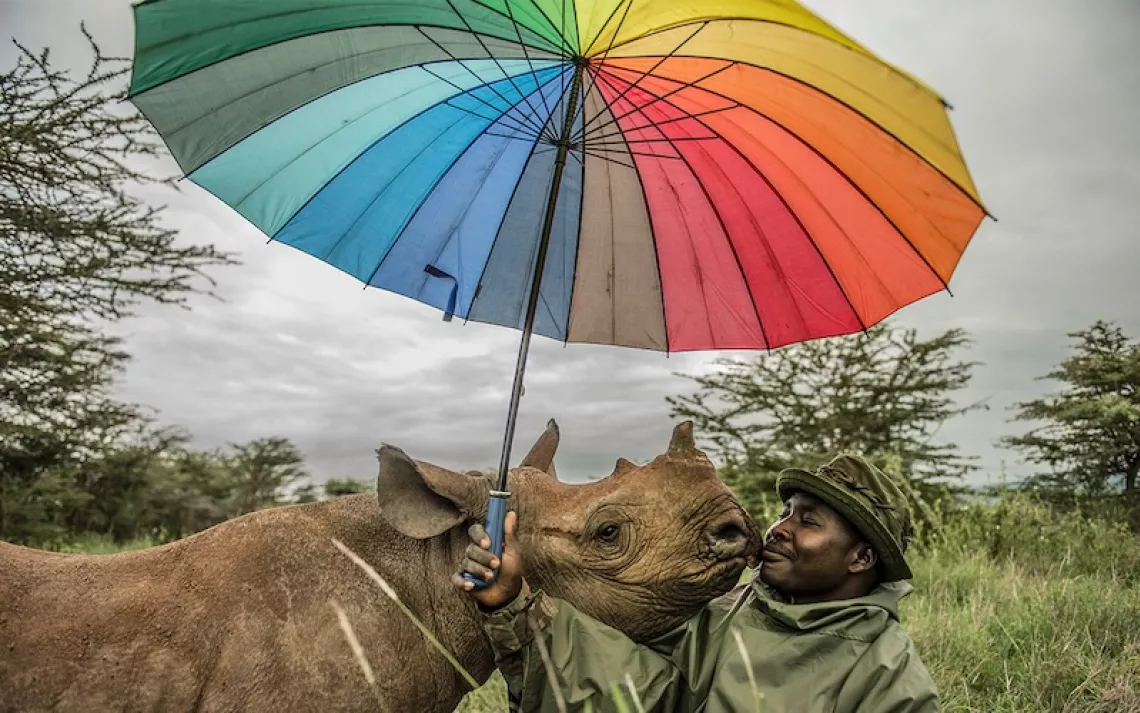STEM Like a Girl
Hands-on learning can be key for young women seeking to get into science
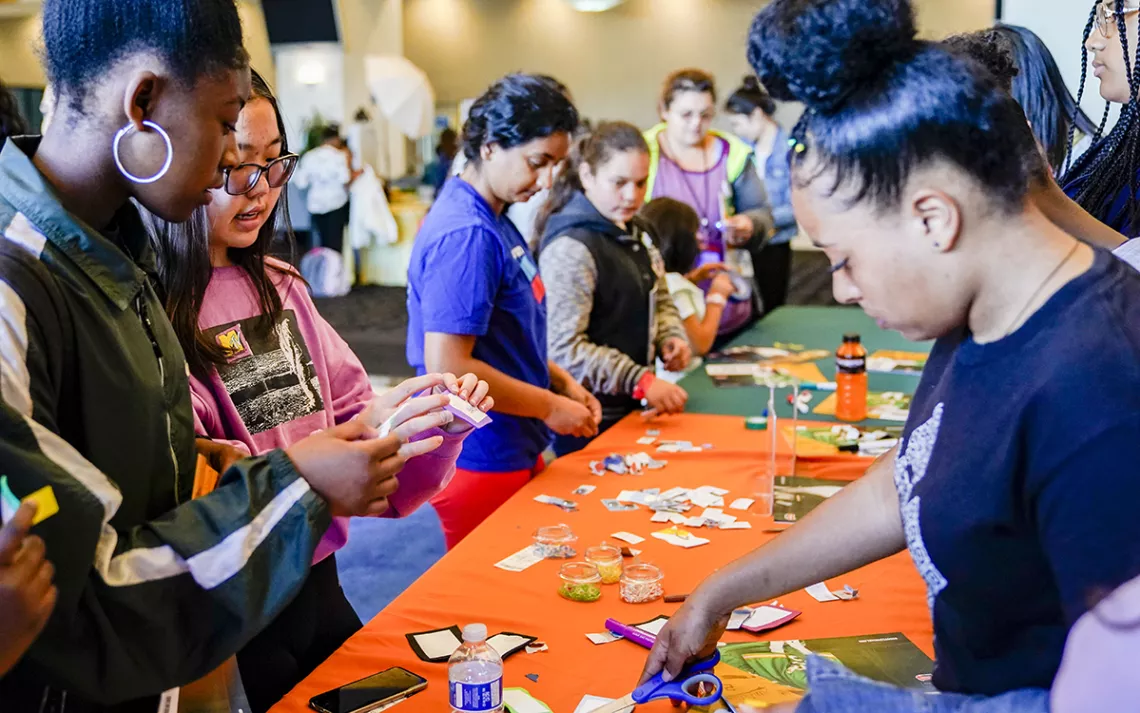
Photos courtesy of Techbridge Girls
San Diego's Cabrillo National Monument draws more than 800,000 visitors a year with its sweeping views of the ocean, the old Point Loma lighthouse, and an intertidal zone that at low tide reveals a profusion of abalone, seastars, and nudibranches. And for a few weeks every summer, it attracts a rather young demographic—10-to-16-year-old girls—and becomes an especially busy place for scientific discovery.
Since 2017, Cabrillo has been home to Ecologik, a free-of-cost camp for young girls from underserved communities in San Diego that combines nature and technology to aid in science learning. The idea is to help the girls forge a connection with nature and to show them that scientific progress can be made by anyone, anywhere.
About 500 miles north of San Diego, a similar after-school program for girls from low-income communities in the Oakland Unified School District is underway. Run by Techbridge Girls—an organization that works to train teachers and girls in California, the Pacific Northwest, and Washington, DC—the program offers “hands-on minds-on projects” with real-world applications. It has OUSD girls soldering (right), woodworking, building lockers, and even developing an app to reduce bullying. Techbridge’s overarching aim? To inspire a love for science, technology, engineering, and mathematics (STEM) in participants—and to keep girls motivated to stay in the field.
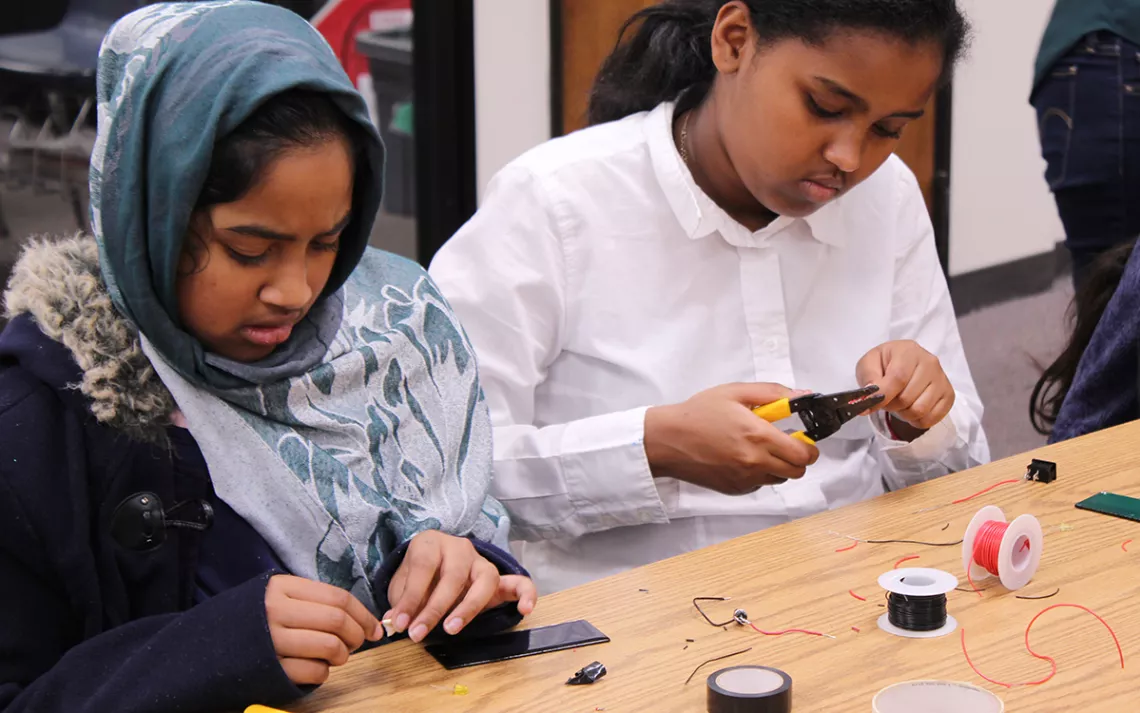
The foundation for a career in STEM tends to be laid pretty early on in life for women. And even as jobs in the field have increased—employment in computer occupations, for instance, is projected to be 12.5 percent higher in 2024 than it was in 2014—women continue to fill a small percentage of them (women of color and from minority communities an even smaller one). Though girls and boys do not show significantly different abilities in mathematics and science during K-12 education, women go on to earn less than 20 percent of undergraduate degrees in engineering, computer sciences, and physics. In the workforce, women hold only 26 percent of computer and mathematical science jobs and 15 percent of engineering positions. Black, Latina, and other racially underrepresented women in STEM account for less than one in 20 employed scientists and engineers.
Ecologik, Techbridge Girls, and many similar organizations are working with young women across the country—especially those from low-income and underserved communities—to close this gap.
Last summer, 13-year-old Nomalanga (who declined to use her full name) was at Cabrillo with her Ecologik cohort, studying 3D-printed abalone. The girls modeled the abalone themselves, using 3D sculpting and visualization apps that helped them stitch together an accurate rendition of the cretaceans they observed at low tide. Using LCD screen thermometers, they tested the impact of heat on light- and dark-shelled abalone of various sizes.
What Nomalanga learned there—about asking questions, collecting data, and moving through the scientific process—would have been near impossible in her school, she says.
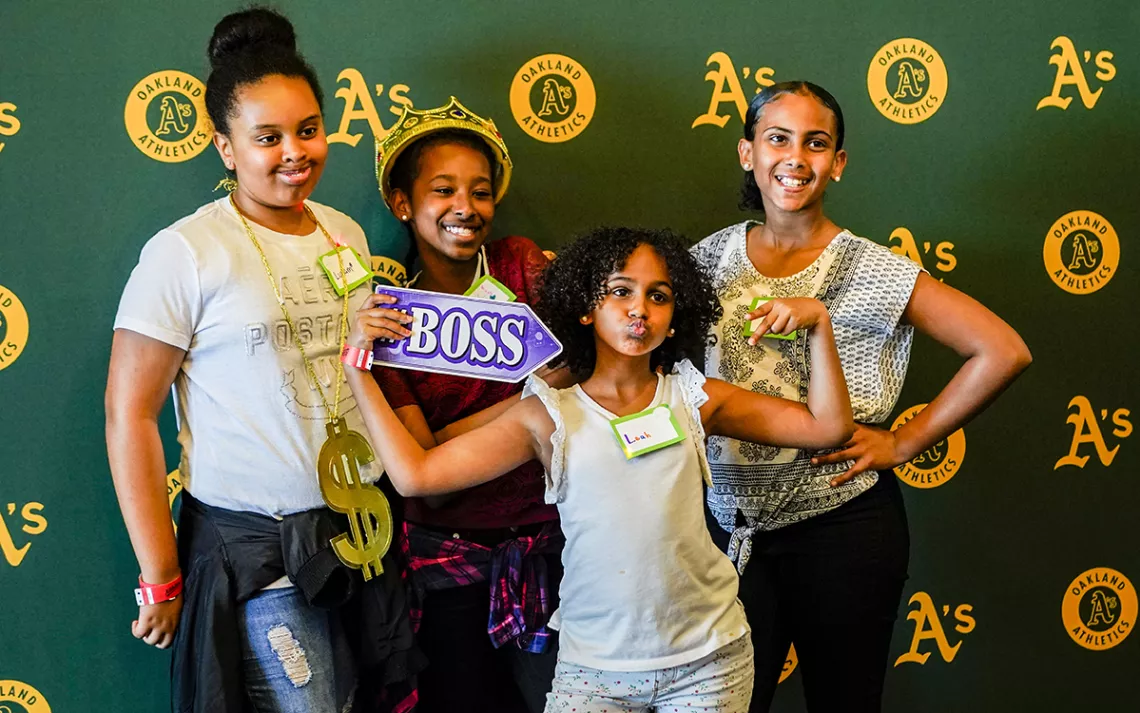
"Everything we teach the girls is based on real science we do at the park," says Samantha Wynns, Ecologik coordinator and community outreach coordinator at the Cabrillo National Monument Foundation. The simulated activities, for instance, are intended to teach camp participants about threats to the biodiversity of the intertidal rocky zone, like ocean acidification and climate change. "Women have been left out of the science conversation for a long time, and though this is changing, this is our way to give these girls the space they need to see that they can, in fact, be scientists," Wynns says.
At Techbridge, girls are encouraged to take on projects that they see as relevant to their communities. For example, many learn woodworking and drilling, so they can make planter boxes for their schools, which don't tend to harbor much greenery. "They get to see the tangible impact they are making around them that makes their lives better," says Bunmi Esho, California executive director for Techbridge Girls, “and this is really important to keep them engaged.”
These hands-on, community-oriented experiments, Esho says, are known to increase the likelihood of young girls entering and staying in the STEM fields—especially when they encounter barriers like ill-equipped labs (or a complete lack of labs) in their schools. And according to Esho, such projects also help girls overcome their fear of failure and see themselves as more capable of doing science.
Research suggests that parents, schools, and teachers often pass on harmful stereotypes that influence girls’ choices and help maintain a “strong gender segregation” across school majors in the long run. One way to limit this is to expose students to successful role models who look like them—professionals they could imagine themselves growing up to become.
At the close of Ecologik camp, the girls participate in a Women in Science fair, at which female scientists from around the region set up tables and activities and field students’ questions. “It opened up the range of science for me—from neuroscience to oceanography,” says 15-year-old Kylie Armstrong, an Ecologik participant since 2017. The more Armstrong talked to scientists in the oceanography field, the more fascinated she found the sea and its marine life. Now, she says she wants to take care of the ocean—and she’s going to start by studying it.
One of Ecologik’s neuroscientist mentors is Dr. Zed Sevcikova Sehyr, who works at San Diego State University. “I got involved so I could tell these young girls all the possible ways they can enter the field of science, and to help empower them to do it,” Sehyr told Sierra. Recounting how she was encouraged to study languages and literature in childhood, Sehyr says she was never given the resources or encouragement she needed to study the sciences. “Growing up, I didn't know what my options could have been, so by participating in these camps, I'm opening up these options for them.”
In a similar vein, Techbridge Girls runs a Role Models Matter project, which is funded by the National Science Foundation. It provides educators with an online training toolkit including videos, hands-on project ideas, and readings containing best practices to engage young girls in STEM.
Esho, who lived in Nigeria when she was younger, wasn't surrounded by boys in middle school and even had a female physics teacher. “She was young and looked just like us. So for us, it was like a no-brainer that we could be successful in the sciences,” she says. But when she immigrated to the US and began high school, she says, she felt pushback for being a woman of color. “I'm black, I'm a woman, so there wasn't that expectation that I would necessarily do well in science, or have a love for math.” It’s why Esho dedicated her career to young girls like herself.
Five years ago, Ecologik participant Nomalanga watched Big Hero 6, an animated superhero film about young scientists who create robots to help their community. She says she knew instinctively that this was her field. But it wasn’t until she found the program that she felt that mechanical engineering was an attainable career for her; after all, only 7.9 percent of mechanical engineers are women. “I felt like I wasn’t wrong for wanting this,” Nomalanga says, “ Now it seems less like a dream and more like a vision.”
 The Magazine of The Sierra Club
The Magazine of The Sierra Club
